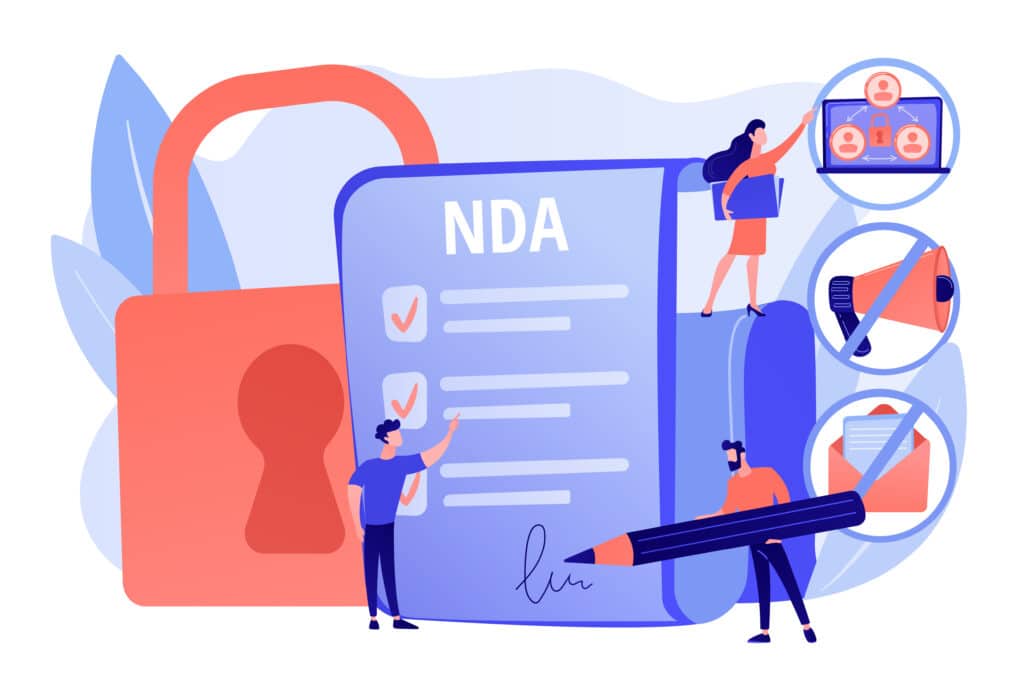There are various ways for a company to bind its employees through a contract management system in the business world. As the business world evolves, a non-disclosure agreement or NDA is one of the many work agreements companies often use. One type of employment agreement that is confidential is an NDA. Then, what are the functions, roles, and types of NDA? Check out the following article.

Table of Content:
Table of Content
Definition of Non-Disclosure Agreement

A Non-Disclosure Agreement or NDA is a contract of a professional relationship, usually a legally bound and confidential work. So, this agreement is effective after the employee has initiated or signed the document. Usually, this agreement is valid until both parties no longer work together because it is legally binding.
Companies usually use NDAs to protect confidential information such as work procedures, work procedures, financial reports, business ideas and innovations, new products, and other company privacy policies. If the information is leaked, the company can sue and take its employees to legal action. This agreement is usually used in certain activities, such as a company making a business agreement, when it wants to create a new project, or when a new investor will acquire share ownership in a company.
NDA function
Rocket lawyer said there are three important functions of NDA:
1. Protect sensitive and confidential information
Firstly, the primary function of an NDA is to protect sensitive and confidential information. When you have signed the NDA agreement, you agree to all the terms and do not share the information you get.
2. Protecting patent rights for the company
Another function is to protect the patent rights of the company. For companies, NDAs are a means of protecting their patents. Usually, this happens when a company makes a new product, but it has not yet been sold to the market, so employees have to keep it secret. Because if the product is leaked to the public first, it will be hard to get the patent, and claims from other parties can occur.
3. Limitations in providing information
Lastly, the final function of the NDA is to limit employees’ disclosure of confidential information. The document will list what information is confidential and what you can talk about with other people much easier with the document management system.
Important Role of NDA
NDAs play a role in protecting confidential company information. This is useful because some technical work concerns internal issues and refers to intellectual property rights. The Act’s contents are also helpful when two companies are in a partnership or similar and both sign an NDA agreement to keep each other’s information confidential.
In essence, this agreement helps protect sensitive and confidential information such as financial statements, business ideas, innovations, and new products. If any of the companies act in breach of the agreement, the offended party could sue the other for the breach, which usually starts with sending a cease and desist letter. The good news is that recognizing cease and desist letters as triggers of infringement lawsuits can help you take the right measures to avoid taking your situation from bad to worse.
Types of NDA
There are two types of NDA:
Non-Disclosure Agreement non-mutual
This is the most commonly used type of NDA. This type of agreement refers to one party who may share sensitive information. Therefore, this party will sign the agreement not to disclose its information.
Non-Disclosure Agreement mutual
This type is an agreement that will bind both parties. For example, if two companies work together, both will sign this agreement not to share sensitive and confidential information.
Non Disclosure Agreement multilateral
This type will involve three parties. However, there will only be one party revealing the confidential information. The other party will undertake to protect and not share such information confidentially.
Example of Non-Disclosure Agreement
That was an example of a Non-Disclosure Agreement that you can use when you want to protect sensitive and confidential information.
Conclusion
These are the explanation, meaning, function, role, and types of the Non-Disclosure Agreement. Essentially, an NDA is a type of contract or confidentiality agreement that the employee and company signed. Before you sign it, it is crucial to know the agreement’s contents and the consequences if you violate it.

In addition to binding employees with contracts and agreements, you can also automate your HR and employee tasks with the HRM system from HashMicro. With the HRM System, you can manage salaries, attendance lists, reimbursement processes, and other operational activities. Click here and you can sign up for a free demo!
Related article: Employment Contract| Matters, Types, and Examples

































